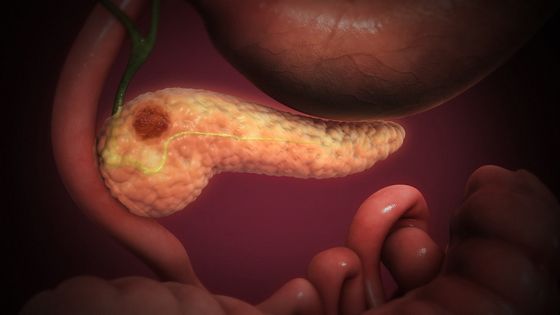Half of the patients who received surgery could avoid unnecessary surgery if they were analyzed by AI

by
In recent years, the technology for detecting cancer and malignancy using AI has made remarkable progress, and it has been suggested that breast cancer , lung cancer and brain cancer can be detected with higher accuracy than skilled doctors. Under these circumstances, studies focusing on pancreatic tumors have shown that 60% of patients who have undergone surgery may have been able to avoid unnecessary surgery if they were analyzed by AI.
A multimodality test to guide the management of patients with a pancreatic cyst | Science Translational Medicine
https://stm.sciencemag.org/content/11/501/eaav 4772
Test shown to improve accuracy in identifying precancerous pancreas cysts-ScienceDaily
https://www.sciencedaily.com/releases/2019/07/190717142421.htm
With This AI, 60 Percent of Patients Who Had Surgery Could Have Avoided It-IEEE Spectrum
https://spectrum.ieee.org/the-human-os/biomedical/diagnostics/more-than-60-of-patients-could-have-avoided-surgery-if-this-ai-had-been-their- doctor
Machine learning platform guides pancreatic cyst management in patients | EurekAlert! Science News
https://www.eurekalert.org/pub_releases/2019-07/aaft-mlp071519.php
Pancreatic cyst is a condition in which a sac-like cyst containing liquid in the pancreas or its periphery is generated. In the United States, approximately 4% of 60s and 8% of 70s are considered to suffer from this pancreatic cyst. You
Most pancreatic cysts are benign, but only a small proportion of them become cancerous, and once they become cancerous, the mortality rate is around 90%. In addition, it is very difficult to distinguish between benign pancreatic cysts and precancerous conditions , so people who have gone through unnecessary pancreatectomy due to misdiagnosis should not stop. Because of this, the difficulty of diagnosing pancreatic cysts has long been a source of pain for doctors.
Image of cancer that has developed in the pancreas

by
Therefore, the research group of Simeon Springer et al., Who works at the Johns Hopkins University Sydney Kimmel Comprehensive Cancer Center, collected data for 436 patients who underwent surgery to remove pancreatic cysts, and provided a supervised learning approach to CompCyst I trained that AI. After that, CompCyst classified the 426 patients with other pancreatic cysts into three stages, 'Because they are benign, should be discharged from the hospital,' 'Follow-up is necessary,' and 'Necessity of surgery.'
As a result, CompCyst was able to diagnose with a 60.4% accuracy, while the standard diagnostic method could only diagnose the 'patient to be discharged' with an accuracy of 18.9%. In addition, “the patient who needs follow-up observation” was increased from 34.3% to 48.6%, and “the patient who needed surgery” was also improved from 88.8% to 90.8%.
.jpg)
by monkeybusiness
From this result, Springer stated that 'If more than a patient could be analyzed with CompCyst, more than half of the patients who received unnecessary resection should be spared surgery.' However, because the data used for training was obtained by surgery, and the pancreatic cysts tested were more specific cases than usual, CompCyst was used as a standard screening test. It is not a substitute, but a supplement to the existing medical examination.
Still, Bad Vogelstein, a professor of oncology at Johns Hopkins University, said, 'Clinical judgment using machine learning is a next-generation technology that can be applied to many diseases other than pancreatic cysts,' He indicated that the medical examination by AI will bring a new era to medical care.
Related Posts:







